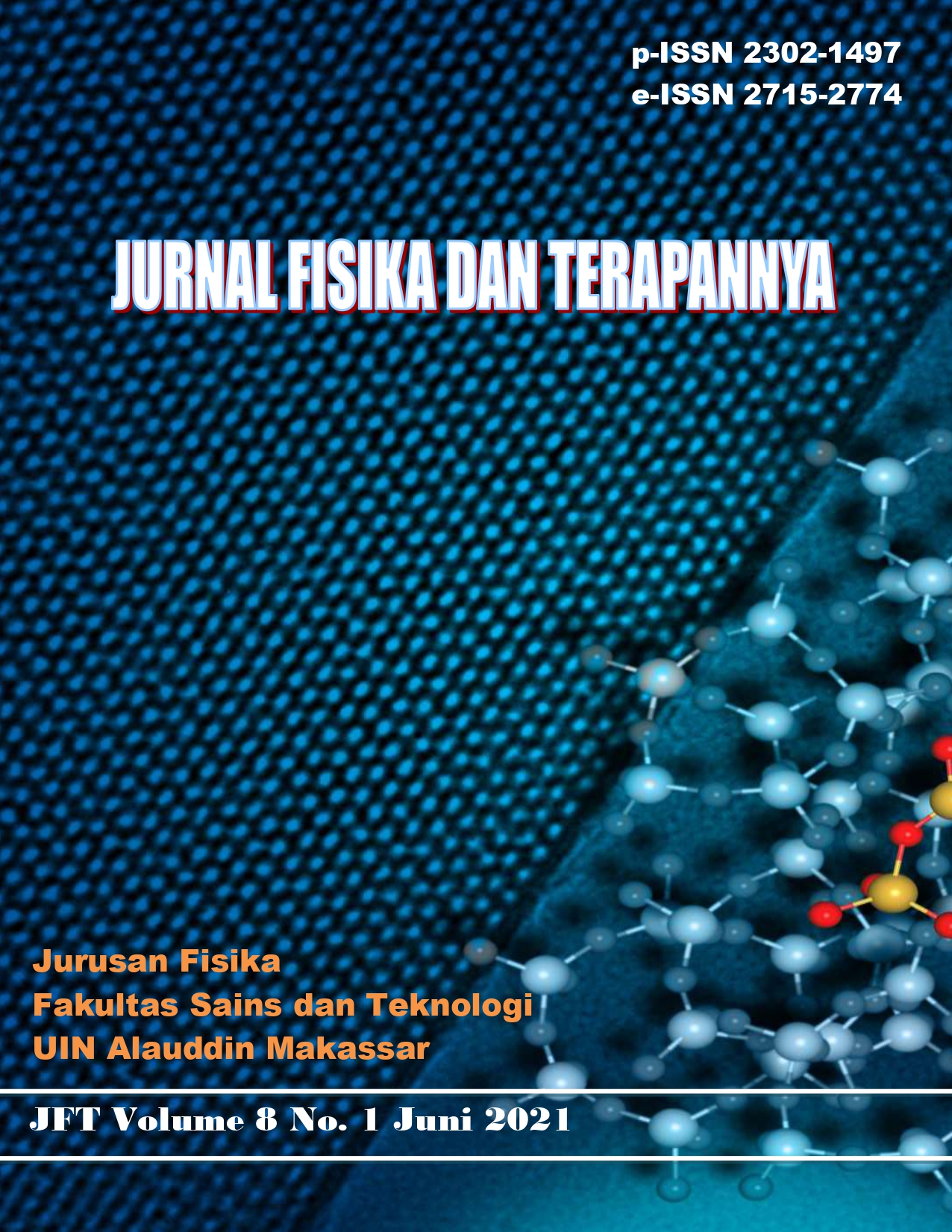PEMANFAATAN JERAMI DAN BUAH LONTAR SEBAGAI SUBSTRAT MENGGUNAKAN TEKNOLOGI MICROBIAL FUEL CELL
Abstract
The increasing energy consumption is not directly proportional to the availability of energy. This encourages the continued development of alternative energy sources to replace fossil energy sources. In this research, a Microbial Fuel Cell (MFC) will be made as an alternative energy source that metabolism of bacteria to produce electrical energy. Microbial Fuel Cell (MFC) is made by varying the type of substrate. The type of substrate used is made of straw and borassus fruit extract. In this study, the MFC design uses a dual-chamber system consisting of an anode compartment and a cathode compartment. Analysis of the effect of substrate variations on MFC performance can be seen from the measurement data of current and voltage using a digital multimeter based on the length of time working with the addition of resistance and without resistance which is used to determine the power density value. The measurement results showed that the highest power density for straw substrate was obtained at 1st hour measurement, which a value of 770.1 mW/m2 for the addition of external resistance and 401.6 mW/m2 without external resistance. Meanwhile, for the borassus fruit extract substrate, the highest power density was obtained at 29 hours of 594.1 mW/m2 using external resistance and 364.9 mW/m2 without external resistance. The resulting power density value is higher than previous studies so that the straw and borassus fruit extract substrate has a great potential to be used as a substrate in MFC technology.
Downloads
References
Akbar, T.N. dkk. (2017). Analysis Of The Effect Metals As An Electrode In Microbial Fuel Cell To The Electricial Energy Production. Jurnal e-Proceeding of Engineering. 4(2). Bandung: Telkom University.
Berita Resmi Statistik. (2018). Luas Panen dan Produksi Beras 2018. Sulsel:BPS Pemprov Sulsel.
Ginting, H.S. dkk.(2013). Pengaruh Pemberian Jerami Padi dengan Berbagai Perlakuan (Fisik, Kimia, Biologi dan Kombinasi) Terhadap Performans Domba Lokal Jantan. Jurnal Peternakan Integrative, 1(2):155-164.
Irmayuni E, dkk. (2018). Effectiveness of Nira Lontar (Borassus Flabellifer) as An Ingredient for The Development of Apem Cake Doungh. Jurnal Pendidikan Teknologi Pertanian. Vol. 4 Oktober : S170-S183.
Kurniawati L & I Sanjaya. (2013). Effect of The Spesies of Cellulotic Bacteria to Efficency of Microbial Fuel Cell. UNESA Journal of Chemistry, 2(2).
Mardiana, dkk. (2015). Microbial Fuel Cell Berbasis Yeast (Saccharomyces Cerevisiae). Jurnal Kesehatan Bakti Tunas Husada, 14(1). Tasikmalaya: STIKes BTH.
Maswati B. dkk. (2019). Diversification of Renewable Energy Sources Utilizing Eceng Gondok Eichhornia Crassipes in Microbial Fuel Cell. International Conference of Science and Technology, UIN Alauddin.
Mirnawati, Heriyono, H., & Wahyuni, I. (2019). Inovasi Energi Bersih dari Molases sebagai Sustainable and Energy Resource Berbasis Teknologi Microbial Fuel Cell (MFC). Sains Dan Teknologi, 2(1), 1–5.
Muftiana dkk. (2018). The Effect of KMnO4 and K3[Fe(CN)6] Concentrations on Electrical Production in Fuel Cell Microbial System with Lactobacillus. Bulgaricus Bacteria in A Tofu Whey Substrat. Jurnal Kimia Sains dan Aplikasi 21(1):29-53.
Novia dkk. (2014). Pembuatan Bioetanol dari Jerami Padi dengan Metode Ozonolisis-Simultaneous Saccharification and Fermentation (SSF). Jurnal Teknik Kimia, 20(3).
Utami L. dkk. (2018). Produksi Energi Listrik dari Limbah Kulit Pisang (Musa Paradisiaca L.) Menggunakan Teknologi Microbial Fuel Cell dengan Permanganate Sebagai Katolit. Jurnal Al-Kimiya, 5(2) (62-67).
Utami, L. dkk. (2018). Produksi Energi Listrik Dari Limbah Kulit Pepaya (Carica Papaya) Menggunakan Teknlogi Microbial Fuel Cells. Jurnal Al-Kimia. Riau: Universitas Sultan Syarif Kasim.
Utami, L., Lazulva, L., & Fatisa, Y. (2019). Produksi Energi Listrik Dari Limbah Kulit Pisang (Musa Paradisiaca L.) Menggunakan Teknologi Microbial Fuel Cells Dengan Permanganat Sebagai Katolit. Al-Kimiya, 5(2), 62–67. https://doi.org/10.15575/ak.v5i2.3833
Utari, N. D., Istirokhatun, T., & Hadiwidodo, M. (2014). Pemanfaatan Limbah Buah Buahan Sebagai Penghasil Energi Listrik dengan teknologi Microbial Fuel Cell (Variasi Penambahan ragi dan Asetat). Jurnal Teknik Lingkungan, 3(2), 1–6. https://www.neliti.com/id/publications/144009/pemanfaatan-limbah-buah-buahan-sebagai-penghasil-energi-listrik-dengan-teknologi#cite
Yogaswara, et al. (2017). Studi Penambahan Mikroorganisme Pada Substrat Limbah Pome Terhadap Kinerja Microbial Fuel Cell. Jurnal Teknik Kimia, 12(1). Balikpapan: Institut Teknologi Karangjoang.


